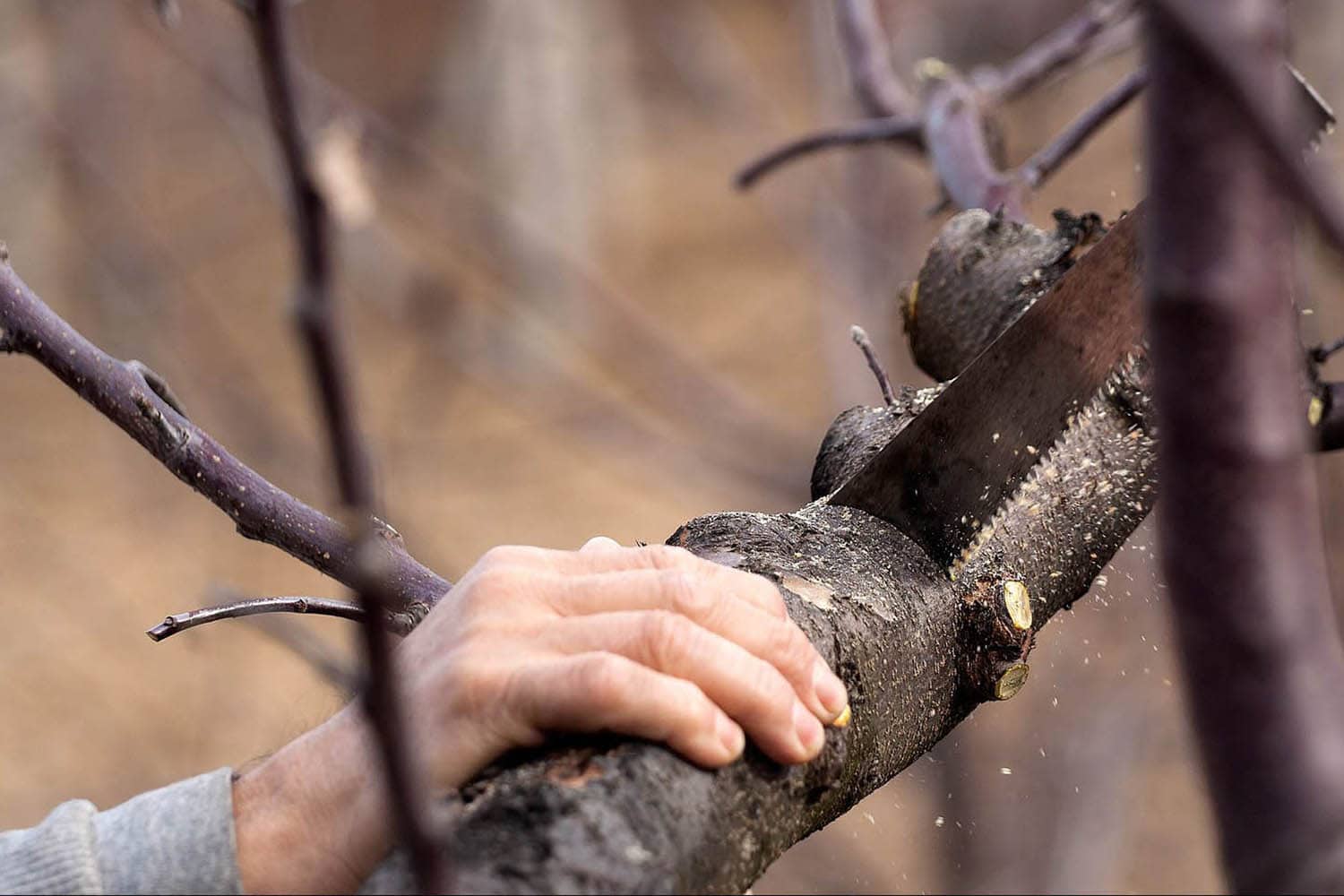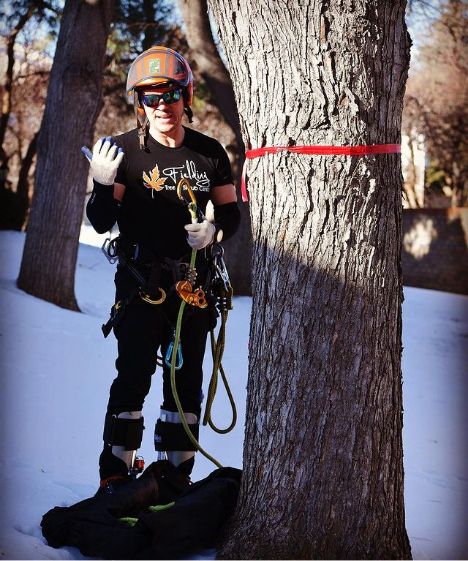When autumn is upon us and the trees along Colorado’s Front Range are showcasing their fabulous fall colors, we truly appreciate them for their majestic beauty. But in a matter of months, winter storms strike and are capable of causing irreparable damage. Knowing how to winterize your trees in Denver is key in the last months of the fall season to prepare your trees for the weather ahead. We want those gorgeous giants to be healthy and happy come spring so we can enjoy them for another growing season.
How Much Damage a Winter Storm Can Cause
Interestingly, trees are biologically engineered to adjust to the external forces of wind and can develop extra strength to withstand these conditions. This natural feature helps them survive, but it cannot protect them from severe weather. Denver trees are known for their hardiness, but even the toughest trees can be dealt serious damage by winter storms.
As a matter of fact, these trees suffered three major setbacks in the 2019-2020 calendar year alone: temperature swings and a cold snap in October, followed by a winter drought, and then an April freeze. To sum it up, all of these weather events have caused undue stress on Front Range trees that make them more susceptible to winter damage and injury.
Here are the most common types of winter storm damage Denver trees incur:
Wind Throw
This occurs when the whole tree is ‘knocked over’ by high winds.
Crown Twist
Uneven wind pressure on a lopsided or uneven tree crown creates a damaging twist on major branches and the stem. This twisting causes the tree stress, much like twisting a rope backwards, resulting in splits and cracking. This is especially damaging around old wounds or other defects, which can lead to failure.
Stem Failure
Aged injury sites or wounds are normal on tree trunks; unfortunately, these stressed areas can lead to tree failure under excessive loads of ice, snow, or wind. Trunks can even snap or buckle if the tree is incapable of withstanding the severe winds.
Root Failure
Stability and anchoring are two critical functions of the root system for keeping a tree upright. Roots that are blocked, ill or damaged can cause trees to lean and fall while under pressure from winter storms.
Branch Failure
Tree branches are common victims claimed by loads of snow and ice. Branches can often be loosely attached to the main stems, and therefore easily experience injury. They can also create high-risk situations in the wrong places!
The Most Susceptible Trees to Snow Damage in Colorado
Maples, ash trees, Siberian elms, American elms, and cottonwoods classify as fast-growing trees with either brittle or weak wood. This means their wood is easier to burrow into for critters to find their new home. Therefore, they’re more susceptible to decay over time. The problem is that many of these trees are popular throughout south Denver, Littleton, and Highlands Ranch. When a heavy load of snow and ice sticks to their branches, these trees often can’t handle the weight and snap. Hardier trees like oaks and pines are built to sustain heavy snow and ice.
In the same way, young trees of all kinds can be damaged during a snow or ice storm. Weight of the snow and ice is sometimes enough to bend the tree over and cause significant stress on the young tree’s support system.
Knock it Off
If you see any of your trees weighed down by snow or ice, you can use a broom or rake to brush the snow off before the stress causes failure.
Remember to sweep upward, not downward, when relieving snow-laden branches.
A downward sweep could further break or damage the tree. Use a gentle, firm upward sweep to slowly remove the ice and snow off the branches. Even if you see noticeable damage on an iced or snowed-over tree, it can be beneficial to remove the snow to prevent further damage.
It is important to remember that any type of tree can be the victim of storm damage. Trimming the canopy to prevent storm damage can save the life of a tree. We recommend leaving tree trimming to the professionals, but if you are determined to trim them on your own, we put together a DIY tree trimming guide that you can read here.
A Homeowner’s Winter Storm Responsibilities in Denver
According to the Denver Parks and Recreation department, here’s what property owners are responsible for in the event of winter storm damage:
- Cleanup of debris from trees on private property and from trees within the public right-of-way adjacent to their property.
- Limbs on the ground are considered debris. Property owners can hire any licensed company to haul limbs away- for this type of work, the company does NOT have to be a licensed tree contractor.
- Pruning needs of private property trees and trees within the public right-of-way adjacent to their property.
How to Winterize Trees in Colorado
You’ve put so much time and energy into your landscaping during spring and summer that you might have been ready to take a break come October and November. But don’t get too complacent! You might just miss your opportunity to start taking proactive action for the winter months.
Wrapping
We highly recommend wrapping your most vulnerable trees, such as young trees or newly planted trees up to 6-8” in diameter. This will protect them from getting scalded by the intense Colorado winter sunshine. Since they have no shade during this season, they are highly susceptible to sunscald. You can purchase tree wraps made of various materials at the hardware store or simply use brown kraft paper and some twine.
Removal
Damaged, dead, or dying trees are a liability on your property. Sadly, many Denver trees are lost each year from storm-related events. Assess the trees on your property and remove any damaged, dead, or dying branches and trees.
Trimming
Winterizing trees in Denver makes them safer and it can also rescue weaker trees by getting rid of dead and diseased wood, making room for healthy new growth. In fact, the winter months are one of the best opportunities to trim your trees. Just like animals, winter is a tree’s time to rest and recharge in hibernation.
Your Tree’s Natural Seasonal Cycle
During the winter season, trees go into a state called dormancy. Trees naturally go to sleep, take a break, and stop producing new growth. Due to this, pruning trees in winter will not cause the tree any stress and will encourage new growth to come in springtime. The timing also provides optimal wound closure, allowing time for healing, and reduces the chance of disfiguration.
Additionally, your tree is bare and the structure of your tree is clearly on full display in late fall and early winter. In this state, a trained arborist can quickly pick out dangerous branches, or diseased wood. It lets us determine whether or not pruning is needed to keep your trees safe and looking their best.
Prevent the Spread of Disease
Lastly, pruning trees in winter takes into account the life cycle of harmful bacteria and fungus that spread serious disease. By winterizing your trees in Denver during dormancy, you can effectively avoid spreading tree diseases that are active and spread easily during the spring and summer growing seasons. These bacteria are either dead or dormant during winter. Therefore, these diseases are less likely to be transmitted by trimming and pruning.
Keep Your Lawn Intact
Heavy equipment is sometimes needed to accomplish tree trimming. The cold hard earth in the wintertime will be more resistant to heavy equipment which minimizes potential damage. This way, your landscape and lawn can stay intact and easily recover in the spring.
Spring Showstoppers
Overgrown shrubs and trees pruned during the winter will be able to recover more quickly in spring with new growth. This will also minimize the amount of time you’ll spend gazing at a plant that looks like a bunch of sticks after rejuvenation pruning. When you trim during the dormant season, your tree or shrub doesn’t have to waste energy on dropping dead or dying growth.
Watering
Did you know your trees need water during the dormant months? They absolutely do, especially if we go more than a week or two without any significant snowfall or rain. The trees may be dormant, but that doesn’t mean they don’t need at least some moisture to stay safe and healthy.
Prolonged dry periods during the winter months can cause root damage, and as a result will threaten the life of a tree or shrub. It’s best to water when it’s above 40 degrees with no snow on the ground. Having no snow cover means there is no moisture making its way to the tree’s root system and it’s in need of water. Also, be sure to water during mid-day so the water has time to work its way into the ground before dark.
- Water your deciduous and evergreen trees up to two times a month between October and March.
- Check soil moisture levels around the dripline of the tree to determine how much water is needed. To accurately determine soil moisture, dig down at least 4-6 inches.
- Water during the day when temperatures are above 40 degrees to allow the water to soak in before freezing night temperatures. Do not water if soil is frozen. Hand watering, a soaker hose or drip applications are allowed up to two hours per area with no day or time restrictions.
- Soaker hoses, soil needles or hoses with a soft spray attachment can be used to water trees in the winter. Do not turn on your irrigation system to water your trees.
- The amount of water your tree should receive depends upon the tree size. A general rule of thumb is to use approximately two gallons of water per inch of trunk diameter for each watering. Measure trunk diameter at knee height.
- The most important area to water for deciduous trees is within the dripline (from the trunk to the outer edges of the tree’s branches). For evergreens, water 3-5 feet beyond the dripline on all sides of the tree.
- Maintain mulch 3-4 inches deep around trees and shrubs to retain moisture. Pull mulch back from the tree trunk. Fun Colorado fact: Mulch is available free to Boulder residents from Western Disposal. Fielding Tree Care can also provide mulch for your property. Give us a call for more info.
Advantages of Dormant Season Watering
- Root development occurs during dormancy and is especially active in newly planted trees and shrubs. If these roots dry out too much they can reach something called critical dryness. In this state, the roots start to die off which does not set the tree up for success in the growing season if it has to regrow roots.
- Steady winter watering helps prevent dehydration and premature death especially in young plants and trees.
- Winter temperatures in Denver are notorious for fluctuating so it’s realistic to have a day here and there where the ground isn’t frozen.
- During an unseasonably warm or dry winter, even hardy established trees need supplemental watering. Pay attention to the amount of moisture during the dormant season and supplement as needed.
Take Care of Your Trees in the Dormant Season
To properly winterize your trees, it’s important to first identify which trees need more help than others. If your property has maples, ash trees, Siberian elms, American elms, or cottonwoods, your trees may need more support through the winter. But if your property mostly has oaks or pines, then your trees may not need as much support. Then, you can implement a dormant season removal, trimming, and watering routine to over-winter your trees and set them up for success come springtime.






